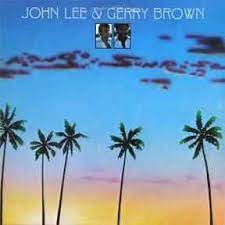
Daily Dose Of Jazz…
John Lee was born June 28, 1952, in Boston, Massachusetts. He is the son of a minister and a social worker. Growing up in Greenwich, Connecticut, Amityville, New York, and Philadelphia, Pennsylvania he began string bass lessons at 10 with Carolyn Lush. At Philadelphia’s Overbrook High School he met drummer Gerry Brown, who together studied at the Philadelphia Musical Academy for two years.
In 1971 Lee began performing with Carlos Garnett and Joe Henderson, and toured with Max Roach thru the spring of 1972 while still a student in Philadelphia. The same year he and Brown relocated to Europe with Den Haag, Holland as their base. Together they toured Europe and recorded in bands led by Chris Hinze, Charlie Mariano, Philip Catherine, Joachim Kühn, and Jasper Van’t Hof.
Moving to New York City in 1974, John played with Joe Henderson, Lonnie Liston Smith, and Norman Connors before joining The Eleventh House with Larry Coryell. The following year he and Gerry Brown signed a recording contract with Blue Note Records and formed a working band. In 1977 they moved over to Columbia Records and began producing records the same year.
From 1982 to 1984, Lee worked with McCoy Tyner, then became Dizzy Gillespie’s bassist, touring and recording with Dizzy’s Quintet, his Big Band, his Grammy winning United Nation Orchestra and the Back to the Future Band that Dizzy co-lead with Miriam Makeba until 1993 when Makeba died.
Lee has performed in over 100 countries around the world and has toured in the bands of Sonny Rollins, James Moody, Jimmy Heath, Pharoah Sanders, Jackie McLean, Gary Bartz, Hank Jones, Walter Davis Jr., Wolfgang Lackerschmid, Alphonse Mouzon, Claudio Roditi, Jon Faddis, Slide Hampton, Roy Hargrove, and Roberta Gambarini, as well as Aretha Franklin and Gregory Hines.
He is a founding member of The Fantasy Band with Chuck Loeb, Marion Meadows, and Dave Samuels. In 1996, at the bequest of Dizzy’s wife Lorraine Gillespie and the Dizzy Gillespie Estate, he became the director and bassist of the Dizzy Gillespie Alumni All-Stars as well as the Dizzy Gillespie All-Star Big Band, and the Dizzy Gillespie Afro-Cuban Experience. They have recorded five albums and toured extensively around the world.
In 2009 he co-founded the jazz recording label JLP (Jazz Legacy Productions), with partner Lisa Broderick. As a producer he has produced over 60 albums and CDs, and as a recording engineer he has recorded and mixed over 100 albums and CDs.
Bassist John Lee, who is a Grammy winning record producer and audio engineer, continues to explore the boundaries of music.
More Posts: audio engineer,bandleader,bass,history,instrumental,jazz,music,record producer
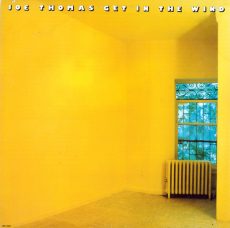
Daily Dose Of Jazz…
Joseph Samuel Thomas was born on May 31, 1933 in Newark, New Jersey. As a child, he learned to play alto and soprano saxophone, trombone, flute and piano, and also taught himself how to write music. Encouraged by his older brother, he began performing in clubs from the age of fifteen and was ultimately noticed by James Moody.
After enlisting in the United States Army he received a Purple Heart during combat in the Korean War. Returning to the States, Joe performed with Specks Williams and joined Rhoda Scott’s Trio in the early 1960s.
Thomas recorded with organist Jimmy McGriff and released a dozen albums under his own name in the late 1970s and early 1980s. As a sideman he also recorded five albums with Scott, and one each with Ambersunshower, Beck, Buddy Terry and Joe Tex.
Flutist, tenor saxophonist and bandleader Joe Thomas passed away in Orange, New Jersey at the age of 84 on July 26, 2017.
More Posts: flute,history,instrumental,jazz,music,piano,saxophone,trombone
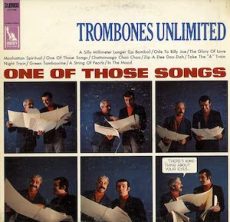
Daily Dose Of Jazz…
John Bernard Gordon was born May 30, 1939 in New York City, New York. He studied at Juilliard School and played with Buddy Johnson and Ray Draper in the 1950s.
Gordon worked with Lionel Hampton in 1961 and 1962 and with Lloyd Price and Sam Rivers later in the 1960s. By the 1970s, he was playing with Charles Tolliver, Clark Terry, Count Basie, Howard McGhee, and Frank Foster.
John led his own ensembles in the late 1970s, and his sidemen included Tolliver, Roland Alexander, Lisle Atkinson, Stanley Cowell, and Andrew Cyrille. During this decade he rejoined Hampton again, with whom he continued working until 1989.
After his Hampton residency Gordon played in Al Grey’s ensemble, Trombone Summit, and founded a group called Trombones Incorporated with Fred Joiner. When Joiner left the group in the early 1990s, he became its leader and changed its name to Trombones Unlimited. The late 1990s had him playing with Slide Hampton, Josh Roseman, Lafayette Harris, Martin Winder, Curtis Fuller, and Thilo Berg.
Gordon worked for several decades as a session musician for recordings and has also performed in pit orchestras for Broadway musicals. At 83, trombonist JOhn Gordon continues to play.
More Posts: bandleader,history,instrumental,jazz,music,trombone
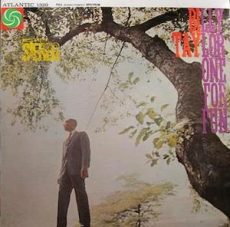
Daily Dose Of Jazz…
Kenny Dennis was born May 27, 1930 in Philadelphia, Pennsylvania and began his musical career in the United States Army Band, playing drums in three bands from 1948-1952. After being discharged, he connected with junior high school mate, pianist Ray Bryant and became part of The Ray Bryant Trio along with Jimmy Rowser on bass. They became the house trio at the North Philadelphia Jazz Club, Blue Note where they played with Kai Winding, Chris Connor and Sonny Stitt among others.
Moving to New York City he worked with Miles Davis, Phineas Newborn, Jr., Billy Taylor, Erroll Garner, Charles Mingus, Johnny Griffin, Slide Hampton and Sonny Rollins. In 1957, Dennis performed in Sonny Rollins’s Trio with bassist Wendell Marshall at Carnegie Hall, a historic performance that was commemorated in 2007 with a 50th anniversary concert.
Dennis migrated to California, when Miles Davis recommended him to Lena Horne. There he recorded with Davis, Michel Legrand, Charlie Mingus, Gerald Wilson, poet Langston Hughes and Nancy Wilson, the latter he married and they had a son. He would also record with Oscar Brown Jr., Langston Hughes, Dodo Greene, Roy Ayers, Mal Waldron and Burt Bacharach.
Since 1997 drummer Kenny Dennis, who never recorded as a leader, has been an assistant director of the Lab Band at the award winning Los Angeles County High School for the Arts.
More Posts: drums,history,instrumental,jazz,music
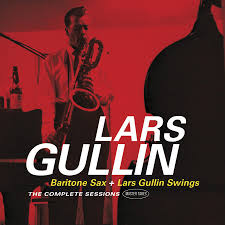
Daily Dose Of Jazz…
Lars Gunnar Victor Gullin was born May 4, 1928 in Visby, Sweden. A child prodigy on the accordion, by age thirteen, he played clarinet in a military band and later learned the alto saxophone. After moving to Stockholm, Sweden in 1947 he became a professional musician as a pianist. Planning on a classical career he studied privately with classical pianist Sven Brandel.
He filled the baritone chair in Seymour Österwall’s band in 1949 by chance, it was enough for him to decide that it was an instrument with possibilities. He was influenced by baritone saxophonist Gerry Mulligan for the first time on the Birth of the Cool recordings. He worked as a member of Arne Domnérus’s septet for two years from 1951.
Gullin began working with visiting American musicians, recording with James Moody, Zoot Sims and Clifford Brown. Most importantly, he first performed with Lee Konitz in 1951, an association which was to be repeated several times in future years.
In 1953 formed his own group, probably the only regular group he was to lead. It was short-lived, breaking up later that year after Lars was responsible for causing the group to be involved in an automobile accident, although no one was seriously hurt. The next year, 1954, he won the best newcomer award in the American DownBeat magazine. Later his albums were leased to Atlantic Records in the United States and toured several European countries with Chet Baker in 1955.
The remainder of his career was blighted by his own narcotics problems and sometimes he survived on artists’ grants from the Swedish government. During most of 1959 he was active in Italy, he played with Chet Baker again and with the jazz alto saxophonist Flavio Ambrosetti, making radio broadcasts with him in Lausanne, Switzerland.
He recorded with Archie Shepp in 1963. One of his last major statements was his Aeros aromatic atomica suite recorded in 1973. A recording jointly led by Lee Konitz and pianist Lars Sjösten, Dedicated to Lee … Play the Music of Lars Gullin was recorded in 1983 and issued by Dragon Records. Baritone saxophonist Lars Gullin transitioned from a heart attack on May 17, 1976, brought on by his long-term addiction to methadone.
More Posts: bandleader,clarinet,history,instrumental,jazz,music,piano,saxophone



